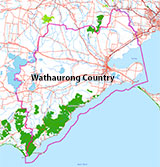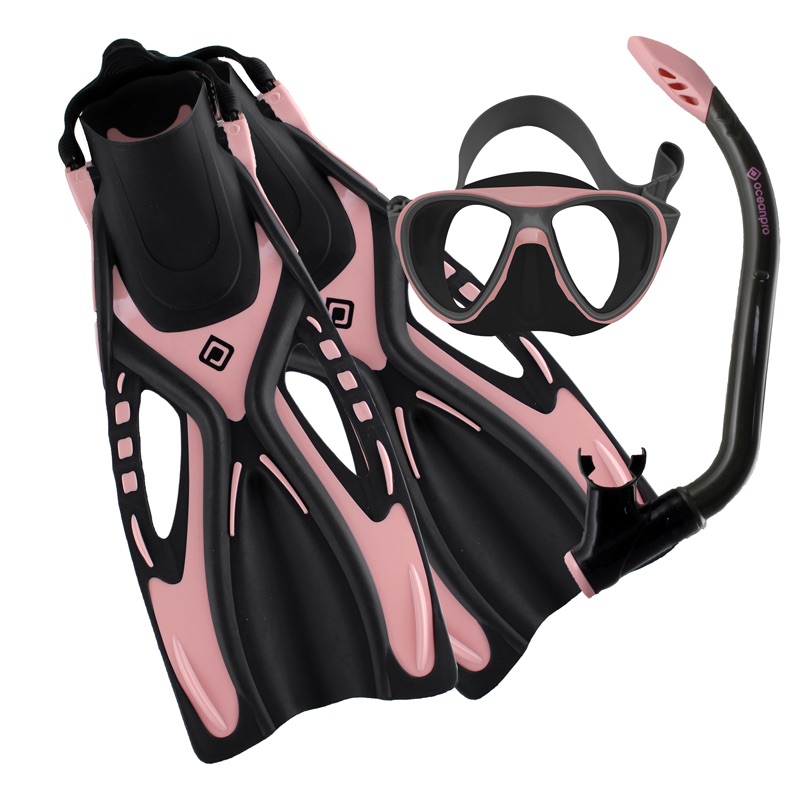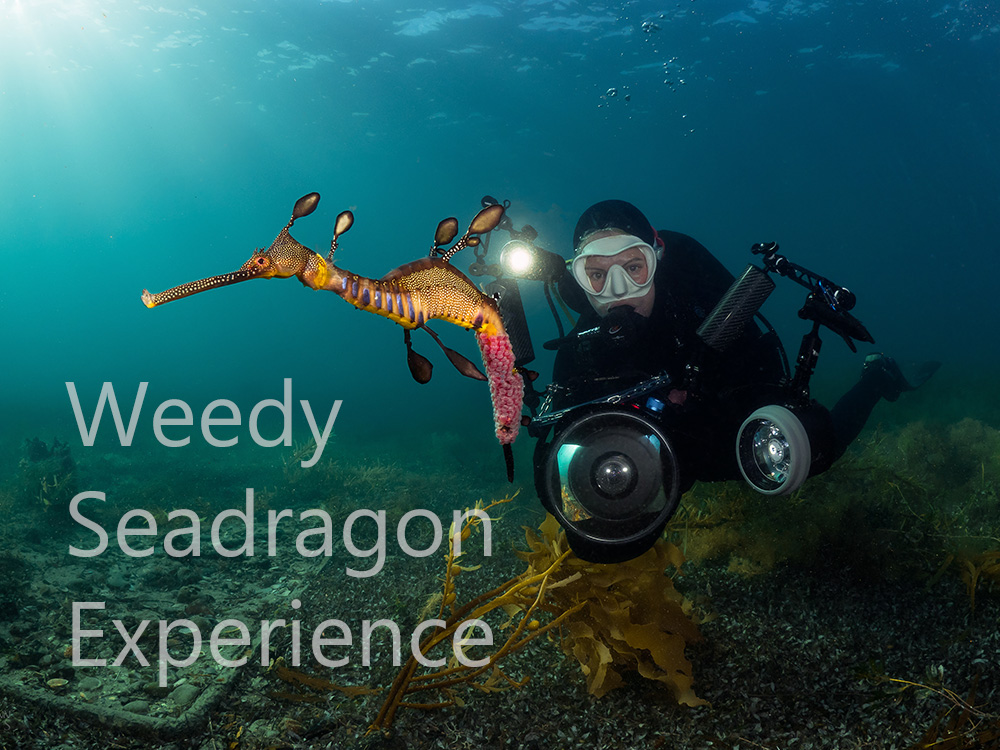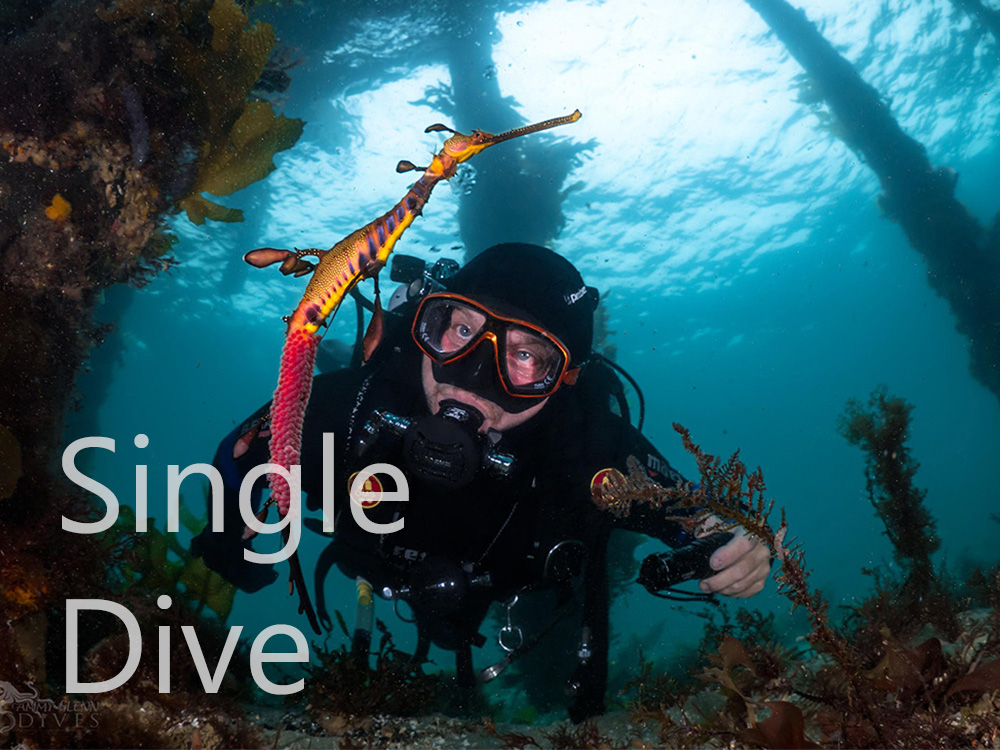Navigation
Our selection of the Top 10 Best scuba diving masks available will enable you to see clearly underwater in comfort. Of course all of these masks are also suitable for snorkelling.
Barwon Bluff North
![]() Reef Dive |
Reef Dive | ![]() Shore access
Shore access
![]()
![]()
![]()
![]()
![]()
Depth: 1 m (3.28 ft) to 9 m (30 ft)
Level: Open Water and beyond.
Barwon Bluff North (aka Point Flinders and Barwon Heads Bluff) is a diving and snorkelling site with many interesting options on the northern side of the pincer shaped reef that juts out into the sea. Barwon Bluff is located at the end of the Barwon River on the southern side separating the river from Bass Strait on Victoria's Surf Coast.
This area is well known for its diverse intertidal invertebrate communities including limpets, whelks, barnacles, mussels, tube worms, and sea squirts. There are also diverse fish communities within kelp forests and subtidal reefs including Western Blue Groper, Horseshoe and Six-spined Leatherjackets, Magpie Perch, Boarfish, Herring Kale, Zebra Fish, Port Jackson Shark, Smooth Stingray. On the shore, there are rock pools containing Sea Nymph Seagrass and green, brown and red algae. Subtidal Kelp Forests containing Crayweed, Bull Kelp, Giant Kelp and many other species are a highlight of the area.
This is a wonderful dive that is better done with little to no swell, but for the experienced the swell just adds to the challenge and beauty of the dive.
Kelp Forest
Between the reef pincers at the end of Point Flinders there is a small bay with a floor of sand and rock. Small colourful sea slugs can be found along the reef sides. Stands of Giant Kelp sway with the waves, tempting snorkellers to swim through and experience an underwater forest. Giant rays regularly sweep along the sand. Offshore, small bommies are fringed with Bull Kelp hiding colourful sponges below.
A swim in the kelp forest can be rivalled with the best kelp gardens in the world, albeit not as deep. Generally a very good and shallow dive.
Off the Edge — a dive at Barwon Heads Marine Santurary | © Mark Rodrigue
Orungal Shipwreck
The shipwreck of the Orungal lies about 700 metres east-north-east of Barwon Bluff. If you feel bold and are prepared to spend plenty of time in the water, it can be accessed as a shore dive from here.
It's a nice dive in about 10 metres, though the shipwreck is pretty broken up. The boilers stick up out of the water at low tide.
Location: Barwon Heads, Victoria 3227
MELWAY Ref: Page 497 C6
Beach Marker: 27W
Parking: When heading south from Barwon Heads on Ewing Blyth Drive turn left onto Bluff Road. You'll first come to a car parking area which is good if you intend to dive the southern side of Barwon Bluff. If you continue on you'll find a second larger car parking area which is good if you're diving the northern side of Barwon Heads Bluff. Before gearing up check out the water. Do the short walk over the crest and check out the sea. If you see lots of white water, head on home.
Entry/Exit: Gear up and walk down the ramp to the beach. Walk onto the rock shelf and as far east as you want to go. Enter the water via the rock shelf. Swim towards Point Flinders and the kelp beds. Return to car via the same way. Foot protection on the rocks is beneficial.
See WillyWeather (Barwon Heads) as a guide for the tide times and the height of the tide.
See also Barwon Heads... ...the Kelp Forest ...and the Wreck of the Orungal in "Shore Dives of Victoria" by Ian Lewis, 3rd edition pages 46–48.
.Barwon Bluff Marine Sanctuary
This dive site lies in the Barwon Bluff Marine Sanctuary.
Located near the mouth of the Barwon River, Barwon Bluff Marine Sanctuary protects 17 hectares of reef and sea life. Featuring a diversity of habitats in a small area, it makes an excellent spot for learning about local marine life. It's a great place for snorkelling and diving to discover a fascinating and complex underwater world featuring feather stars and barnacles, sea slugs, rays and small sharks, and schools of fish living amongst the kelp forests, sandstone arches, and colourful sponge gardens.
Living on the Edge — a tour of Barwon Bluff Marine Sanctuary | © Friends of The Bluff
Predominately composed of reef, the eastern half of the reef is basalt, formed from lava flow, and is exposed to the flow of the river. The western side is old sandstone and influenced by ocean swell.
The variation in conditions across the reef results in the presence of a huge diversity of plants and animals. Divers can see anything from feather stars and barnacles to rock lobsters, rays and schools of fish. Bull Kelp, sandstone arches and sponge gardens create a fascinating and complex underwater world.
There are many other great sites for the inquisitive diver to explore here.
Just outside of the Barwon Bluff Marine Sanctuary on the outer edges of the reef are two shipwrecks: Earl of Charlemont, a three-masted wooden ship wrecked 18 June 1852, and Orungal, a steel screw steamer wrecked 21 November 1940.
Barwon Bluff Marine Sanctuary is part of an Aboriginal cultural landscape in the traditional Sea Country of the Wadawurrung Peoples.
Barwon Bluff Marine Sanctuary Boundaries
The sanctuary encompasses the rock platform at the base of the bluff and extends offshore for about 400 metres to the east and south. The east west boundary to the north is indicated by a yellow triangulare shore marker. The southern boundary can be viewed at sea by aligning the two yellow triangular shore markers located on the dune, one above the other.
North-Western corner of sanctuary (shore)
Latitude: 38° 17.350′ S (38.28916667° S / 38° 17′ 21″ S)
Longitude: 144° 30.033′ E (144.50055556° E / 144° 30′ 2″ E)
North-Eastern corner of sanctuary
Latitude: 38° 17.333′ S (38.28888889° S / 38° 17′ 20″ S)
Longitude: 144° 30.033′ E (144.50055556° E / 144° 30′ 2″ E)
Eastern corner of sanctuary
Latitude: 38° 17.333′ S (38.28888889° S / 38° 17′ 20″ S)
Longitude: 144° 30.350′ E (144.50583333° E / 144° 30′ 21″ E)
Southern corner of sanctuary
Latitude: 38° 17.600′ S (38.29333333° S / 38° 17′ 36″ S)
Longitude: 144° 30.067′ E (144.50111111° E / 144° 30′ 4″ E)
South-Western corner of sanctuary (shore)
Latitude: 38° 17.400′ S (38.29° S / 38° 17′ 24″ S)
Longitude: 144° 29.800′ E (144.49666667° E / 144° 29′ 48″ E)
See also, Parks Victoria: Barwon Bluff Marine Sanctuary,
Friends of The Bluff,
Life on the Edge — A Guide to the Animals and Plants of the Barwon Bluff Marine Sanctuary,
Park Note: Barwon Bluff Marine Sanctuary,
Parks Victoria: Barwon Bluff Marine Sanctuary Management Plan — April 2007, and
Barwon Heads... ...the Kelp Forest ...and the Wreck of the Orungal in "Shore Dives of Victoria" by Ian Lewis, 3rd edition pages 46–48.
You are not permitted to carry a spear gun while snorkelling or scuba diving in Barwon Bluff Marine Sanctuary.
Traditional Owners — This dive site is in the traditional Country of the Wathaurong (Wadda-Warrung) people of the Kulin Nation. This truly ancient Country includes the coastline of Port Phillip, from the Werribee River in the north-east, the Bellarine Peninsula, and down to Cape Otway in the south-west. We wish to acknowledge the Wathaurong as Traditional Owners. We pay respect to their Ancestors and their Elders, past, present and emerging. We acknowledge Bunjil the Creator Spirit of this beautiful land, who travels as an eagle, and Waarn, who protects the waterways and travels as a crow, and thank them for continuing to watch over this Country today and beyond.
Barwon Bluff North Location Map
Latitude: 38° 17.372′ S (38.289529° S / 38° 17′ 22.3″ S)
Longitude: 144° 30.155′ E (144.502579° E / 144° 30′ 9.28″ E)
Datum: WGS84 |
Google Map
| Get directions
Added: 2022-03-30 17:05:27 GMT, Last updated: 2022-05-03 16:30:15 GMT
Source: Google Earth
Nearest Neighbour: Barwon Bluff South, 444 m, bearing 253°, WSW
Barwon Bluff Marine Sanctuary.
Barwon Heads, Surf Coast.
Depth: 1 to 9 m.
[ Top ]
DISCLAIMER: No claim is made by The Scuba Doctor as to the accuracy of the dive site coordinates listed here. Should anyone decide to use these GPS marks to locate and dive on a site, they do so entirely at their own risk. Always verify against other sources.
The marks come from numerous sources including commercial operators, independent dive clubs, reference works, and active divers. Some are known to be accurate, while others may not be. Some GPS marks may even have come from maps using the AGD66 datum, and thus may need be converted to the WGS84 datum. To distinguish between the possible accuracy of the dive site marks, we've tried to give each mark a source of GPS, Google Earth, or unknown.
Copyright © 2005-2022 by The Scuba Doctor Australia, ABN 88 116 755 170. All rights reserved.
tel. +61 3 5985 1700 :: email. diveshop@scubadoctor.com.au :: Web site by it'sTechnical 2022





























![Halcyon Infinity 30lb System [SS Small Backplate] Halcyon Infinity 30lb System [SS Small Backplate]](/diveshop/images/halcyon/Halcyon-Evolve-Wing.jpg)
















































































































